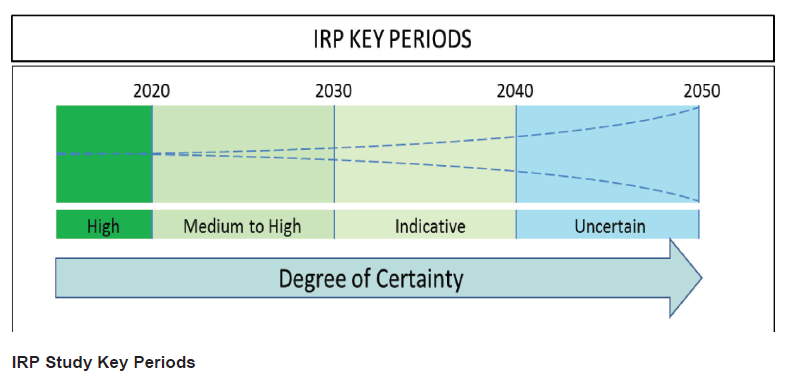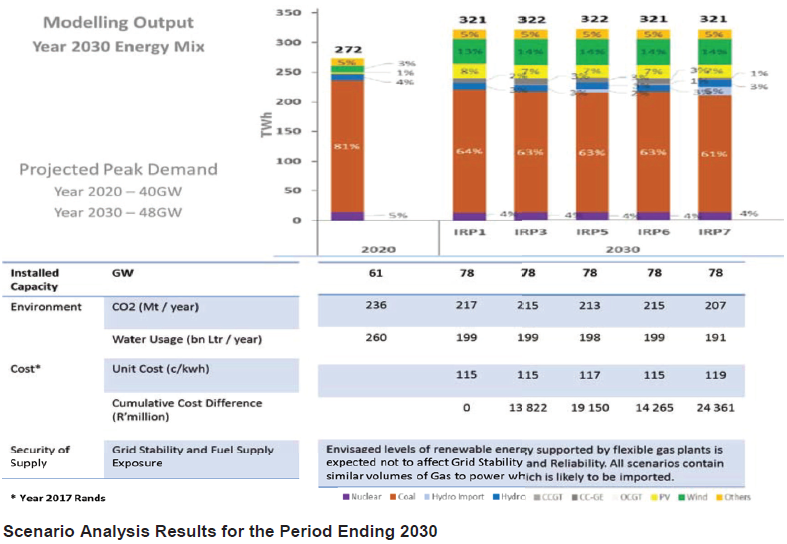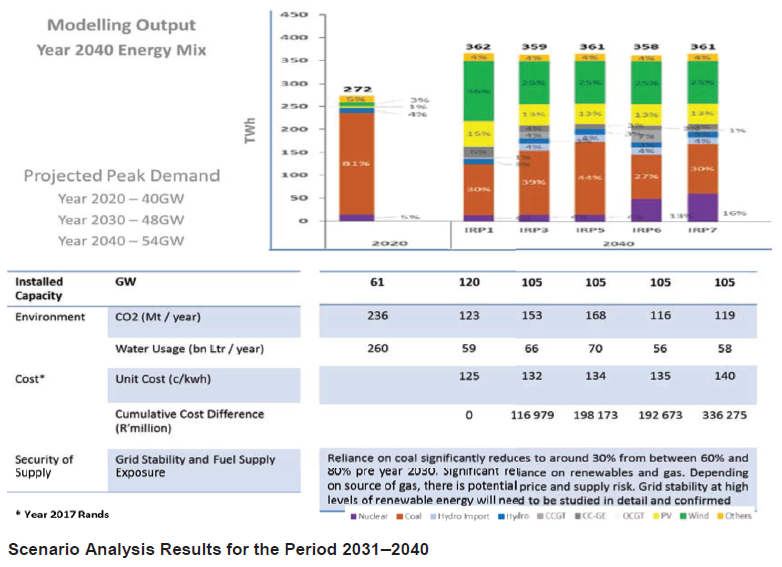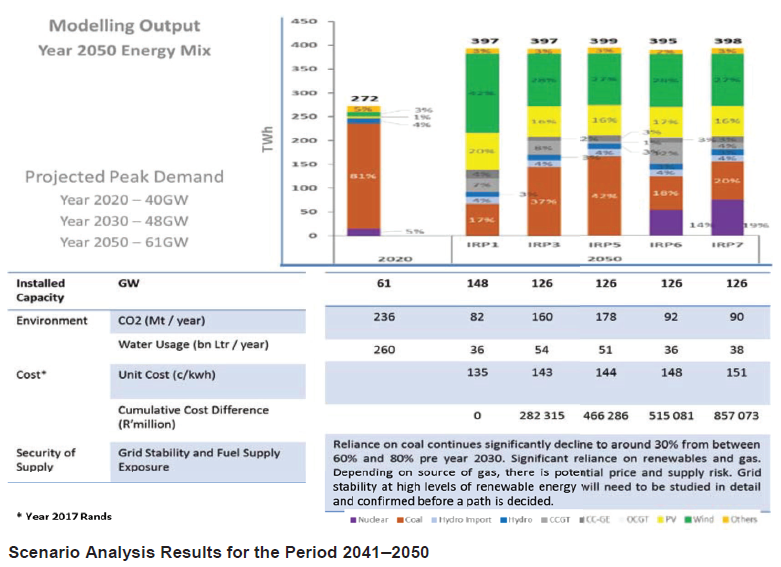


Electricity Regulation Act, 2006 (Act No. 4 of 2006)NoticesIntegrated Resource Plan 20196. Appendices6.4 Appendix D : Summary of Published Draft IRP 20186.4.2 Results of the Scenarios |
The analysis of the results from the simulations were analysed by looking at the energy mix for three periods (2017–2030, 2031–2040 and 2041–2050). The degree of certainty of the assumptions decreases the longer we project into the future and hence the depiction of the periods in

The assumptions for the period between now and year 2020 are of high certainty as they actually fall within the Eskom operations plan for the year.
The period 2021–2030 is termed a “medium-to-high” period of certainty, with new capacity requirements driven by the decommissioning of old Eskom power plants and marginal demand growth. While demand and technology costs are likely to change, the decommissioning of old plants will definitely result in the requirements for additional capacity.
The period 2031–2040 is termed an “indicative period”, as the uncertainty regarding the assumptions begins to increase. The output for this period is relevant to the investment decisions of the 2021–2030 period because it provides information needed to understand various future energy mix paths and how they may be impacted by the decisions made today.
The period 2041–2050 is even more uncertain than the period before 2040.
The results were analysed in line with the objectives of the IRP, which are to balance cost, water usage, emission reduction and security of supply.
From the results of the scenario analyses, the following are observed for the period ending 2030:
| • | Committed REIPPP (including the 27 signed projects) and Eskom capacity rollout ending with the last unit of Kusile in 2022 will provide more than sufficient capacity to cover the projected demand and decommissioning of plants up to around 2025. |
| • | The installed capacity and energy mix for scenarios tested for the period up to 2030 does not differ materially. This is driven mainly by the decommissioning of about 12GW of Eskom coal plants. |
| • | Imposing annual build limits on RE will not affect the total cumulative installed capacity and the energy mix for the period up to 2030. See Table 7 and Table 8 for details. |
| • | Imposing carbon budget as a strategy for carbon dioxide emission reduction or maintaining the PPD approach used in 2010 will not alter the energy mix by 2030. |
| • | The projected unit cost of electricity by 2030 is similar for all scenarios, except for market-linked gas prices where market-linked increases in gas prices were assumed rather than inflation-based increases. |
| • | The scenario without RE annual build limits provides the least-cost option by 2030. |
For the period post 2030, the following are observed:
| • | The decommissioning of coal plants (total 28GW by 2040 and 35GW by 2050), together with emission constraints imposed, imply coal will contribute less than 30% of the energy supplied by 2040 and less than 20% by 2050. |
| • | Imposing annual build limits on RE will restrict the cumulative renewable installed capacity and the energy mix for this period. |
| • | Adopting no annual build limits on renewables or imposing a more stringent carbon dioxide emission reduction strategy implies that no new coal power plants will be built in the future unless affordable cleaner forms of coal to power are available. |
| • | The projected unit cost of electricity differs significantly between the scenarios tested. It must be noted that a change in fuel cost (gas, for example) can affect the projected cost significantly. |
| • | The scenario without RE annual build limits provides the least-cost option by 2050. |
| • | Overall, the installed capacity and energy mix for scenarios tested for the period post 2030 differs significantly for all scenarios and is highly impacted / influenced by the assumptions applied. |


